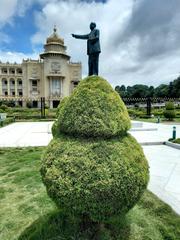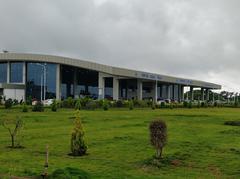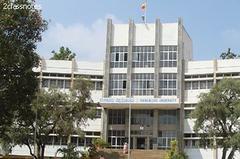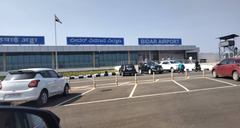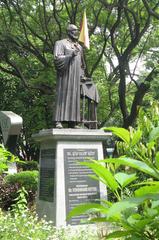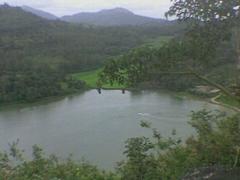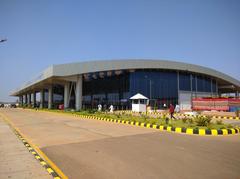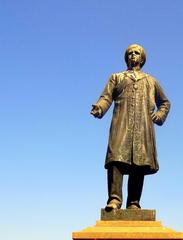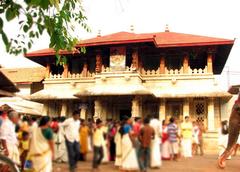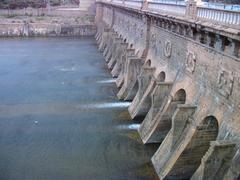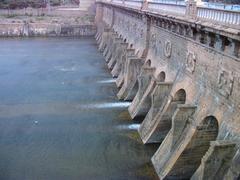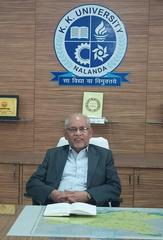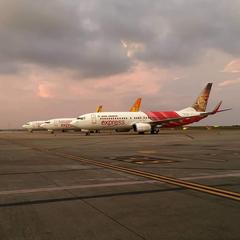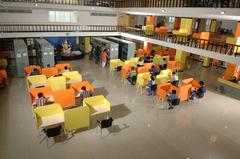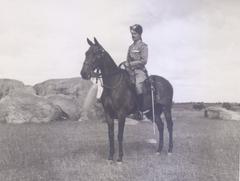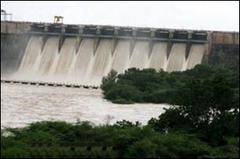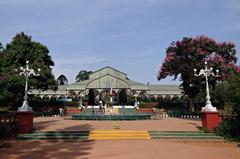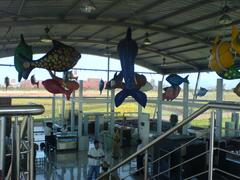Kupgal Petroglyphs: Visiting Hours, Tickets, and Historical Significance in Karnataka, India
Date: 15/06/2025
Introduction
Located amid the granite ridges of Hiregudda (Kupgal Hill) in Bellary district, Karnataka, the Kupgal Petroglyphs stand as a testament to South India’s Neolithic ingenuity and cultural richness. These prehistoric engravings—dating from circa 3000 BCE to 1200 BCE—are etched on dolerite and granite outcrops, featuring motifs of cattle, humans, ritual scenes, and the remarkable “musical rocks” or rock gongs. Together, they provide rare insights into the economic, social, and spiritual lives of early agricultural and pastoral societies on the Deccan plateau.
Adjacent to Kupgal is the Sanganakallu-Kupgal complex, one of South India’s most significant Neolithic sites. Here, evidence of domestic settlements, large-scale lithic tool production, and symbolic burial customs reveals a continuum of human occupation from the late Mesolithic through the Iron Age. These interconnected archaeological landscapes underscore the region’s pivotal role in the neolithization of southern India.
This article offers a comprehensive overview of Kupgal’s historical context, visitor information (including hours, ticketing, and accessibility), nearby attractions, and the ongoing conservation challenges and strategies essential to safeguarding this invaluable heritage.
For further study, authoritative resources include the UCL Deccan Prehistory Project and the Cambridge Archaeological Project PDF.
Table of Contents
- Introduction
- Historical and Archaeological Overview
- Sanganakallu-Kupgal Complex
- Visiting Information
- Conservation and Preservation
- Frequently Asked Questions (FAQ)
- Visual Gallery
- References and Further Reading
Historical and Archaeological Overview
Prehistoric Context
The Kupgal Petroglyphs are among the most significant rock art sites in South India, primarily dated to the Neolithic period (ca. 3000–1200 BCE) and possibly spanning into the Iron Age (Wikipedia). Etched into dolerite ridges on Hiregudda hill, these carvings have survived thousands of years, offering a vivid record of early settled communities in the Deccan.
Artistic Motifs and the Musical Rocks
Animal and Human Imagery
The petroglyphs predominantly depict long-horned, humped-back cattle—likely Bos indicus (zebu)—reflecting the vital role of pastoralism. Other motifs include elephants, birds, wheeled carts, and dynamic human figures: some ithyphallic, some engaged in dance or ritual, and others interacting with animals (BBC News; Frontline). Abstract and composite symbols, often in inaccessible locations, suggest esoteric or communal significance.
Musical Rocks (Rock Gongs)
A unique feature at Kupgal is the “musical rocks”—dolerite boulders with polished grooves that emit resonant, gong-like tones when struck (BBC News). These were likely used in rituals, adding a multisensory aspect to ceremonies and possibly serving as instruments for communication or spiritual invocation (Cambridge Antiquity PDF).
Rediscovery and Modern Research
Initially documented during British colonial surveys in the 19th century, the Kupgal Petroglyphs were neglected and even thought destroyed before their rediscovery in the early 2000s. Renewed research, led by the Deccan Prehistory Project (University College London and Indian partners), has catalogued thousands of engravings and brought international attention to the site (UCL Deccan Prehistory Project).
Sanganakallu-Kupgal Complex
Settlement Structure and Material Culture
The greater Sanganakallu-Kupgal complex spans over 1,000 acres and reveals a sophisticated Neolithic landscape (Cambridge Archaeological Project PDF). Excavations have uncovered:
- Circular Houses: Built with bamboo and clay, often with central hearths.
- Lithic Workshops: Industrial-scale production of basalt and quartz tools, including axes, chisels, and sling stones (Springer Link Publication).
- Ashmounds: Ritual deposits of burnt cow dung, symbolizing cattle veneration.
- Pottery and Figurines: Hand-made ceramics and terracotta animal figures.
- Evidence of Early Agriculture: Cultivation of millets and pulses, with domesticated cattle, sheep, and goats.
Ritual, Burial, and Regional Significance
The spatial arrangement of rock art, ashmounds, and burial monuments points to a complex ritual landscape. Megalithic burials and grave goods indicate evolving social organization and belief systems, while the continuity of occupation underscores the area’s role in the transition to settled agricultural life in South India (Roberts et al., 2015).
Visiting Information
Hours and Best Time to Visit
- Kupgal Petroglyphs: Open daily from 8:00 AM to 5:30 PM
- Sanganakallu-Kupgal Complex: Open 9:00 AM to 5:30 PM
- Best Season: October to March for cooler temperatures and clear weather
Tickets and Entry
- Kupgal Petroglyphs: No formal ticketing; entry is free. Donations for conservation are encouraged.
- Sanganakallu-Kupgal: Entry is free; guided tours may require a fee.
Directions and Accessibility
- Location: About 20–25 km from Bellary (Ballari) city, Karnataka.
- Getting There: Private taxis or app-based cabs from Bellary are most convenient. Nearest railway: Bellary Junction.
- Terrain: Expect a moderate hike (30–45 minutes) over uneven, rocky paths. Not wheelchair accessible; sturdy footwear recommended.
Guided Tours and Local Expertise
Local guides and archaeologists offer tours that illuminate the petroglyphs’ cultural and historical context. Booking a guide in advance is highly recommended for a richer experience.
Nearby Attractions
- Bellary Fort: A medieval fort offering panoramic views and insight into regional history.
- Hampi: UNESCO World Heritage Site, famed for Vijayanagara ruins, about 60 km away.
- Daroji Bear Sanctuary: A wildlife reserve ideal for nature enthusiasts.
Photography Tips
- Lighting: Early morning or late afternoon provides the best conditions.
- Guidelines: Use natural light; avoid flash. Respect all conservation rules.
Conservation and Preservation
Major Threats
- Quarrying and Urbanization: Granite extraction damages petroglyph surfaces and destabilizes rock formations (Indianetzone).
- Vandalism and Unregulated Tourism: Graffiti, souvenir collecting, and lack of management threaten the site (Map Academy).
- Natural Weathering: Monsoonal rains, temperature shifts, and biological growth contribute to erosion.
- Loss of Local Knowledge: Decline in traditional practices weakens community stewardship.
Conservation Challenges
- Documentation Gaps: The vast number and spread of petroglyphs complicate comprehensive recording (Indianetzone).
- Site Security: Large, rugged terrain and lack of on-site personnel hinder effective protection (Map Academy).
- Legal Protection: Kupgal is not fully designated as a protected monument, limiting resources (ScienceDirect).
Preservation Strategies
- Digital Archiving: High-resolution photography, 3D scanning, and GIS mapping (Indianetzone).
- Legal Designation: Advocacy for protected status and clear site boundaries (ScienceDirect).
- Community Engagement: Education initiatives and stewardship programs (Indianetzone).
- Sustainable Tourism: Designated pathways, visitor caps, and interpretive signage (Map Academy).
- Scientific Conservation: Non-invasive cleaning and microclimate monitoring.
- International Collaboration: Ongoing research partnerships to enhance documentation and funding (ScienceDirect).
Frequently Asked Questions (FAQ)
What are the visiting hours for Kupgal petroglyphs?
8:00 AM to 5:30 PM daily.
Is there an entry fee?
No; entry is free, but donations for conservation are welcomed.
How do I reach Kupgal?
Via Bellary city—by private taxi, app-based cab, or local bus; followed by a moderate hike.
Are guided tours available?
Yes, local guides and archaeologists offer informative tours.
Is the site accessible for people with disabilities?
The rocky terrain is challenging; accessibility is limited.
Can I take photographs?
Yes, photography is allowed (without flash); respect conservation guidelines.
Visual Gallery
References and Further Reading
- UCL Deccan Prehistory Project
- Cambridge Archaeological Project PDF
- Wikipedia: Kupgal Petroglyphs
- BBC News
- Frontline
- Indianetzone
- Map Academy
- ScienceDirect
- Springer Link Publication (Shipton et al., 2012)
- Wikipedia: Sanganakallu
Related Articles
Summary and Visitor Recommendations
The Kupgal Petroglyphs and Sanganakallu-Kupgal complex offer a rare window into South India’s prehistoric world, blending artistic ingenuity, ritual performance, and social complexity. Despite mounting threats, ongoing research and community engagement provide hope for their preservation. Visitors are encouraged to plan responsibly—visit during daylight, use local guides, and support conservation—to ensure these sites remain for generations to come. Stay informed and help protect this unique heritage by exploring further resources, downloading the Audiala app, and connecting with preservation initiatives.

